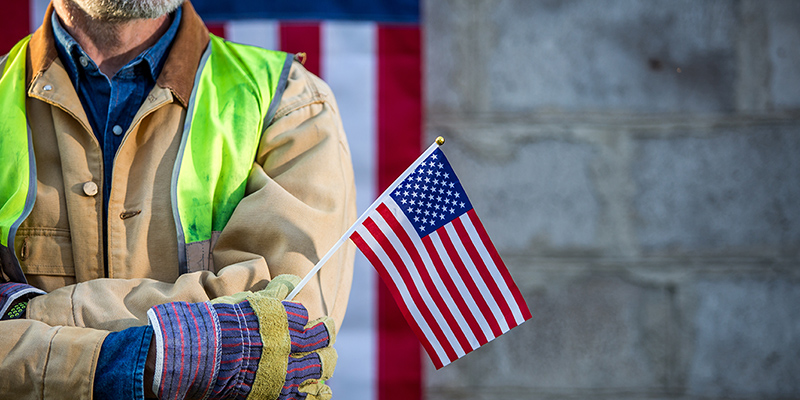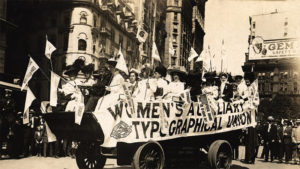As Labor Day nears, many Americans are undoubtedly excited to get a long weekend off work, not knowing the historical significance behind this holiday. Here are some Labor Day facts to help you appreciate the day better.
Interesting Labor Day Facts to Help You Appreciate the Holiday
Labor Day is a federal holiday that falls on the first Monday of September each year. While most people make the most out of this time to participate in fun activities, it is imperative to know why we celebrate it in the first place. Whether you want to commemorate the holiday yourself or share interesting trivia about the holiday, here are the most important facts about Labor Day.
1. The Parade That Started It All
The first Labor Day parade is widely accepted to have occurred on September 5, 1882, in New York City. On that day, more than 10,000 workers took unpaid leave to march from City Hall to Union Square. These workers came from all types of industries and even included children. While some states already had restrictions back then, child labor was more common than you think. The demonstration served as a protest against unsafe working conditions, low wages, and long hours.
2. The Grim Reality of American’s Labor Standards in the 18th to 19th Century
Although today’s labor standards are nowhere near perfect, the labor standards in the 18th and 19th centuries were much worse. During those times, Americans worked 12 hours a day, 7 days a week, often in unsafe and unsanitary environments. As mentioned above, children even worked at factories, mills, and mines, and were paid significantly less than their adult counterparts.
Perhaps one of the most tragic incidents took place in Chicago and what is now known as the Haymarket Riot or the Haymarket Affair. Workers had gathered for a rally where a bomb exploded. The subsequent chaos and violence led to the deaths of both workers and police officers.
 3. The First State to Recognize Labor Day
3. The First State to Recognize Labor Day
A few areas had already been celebrating Labor Day unofficially by the time the first state declared it a legal holiday. Oregon was the first to do so in 1887, and other states followed soon after.
4. The Federal Holiday Came Later
While several states had already declared Labor Day as a legal holiday, it was not until 1894 that it became a federal holiday. On June 28, 1894, President Grover Cleveland officially recognized Labor Day at the federal level. It was also at this point that it was decided to hold Labor Day on the first Monday of September every year.
The declaration of Labor Day as an official federal holiday, though, did not come from out of the left field. Prior to the signing, workers at the Pullman Palace Car Company went on strike as a way to protest the cutting of wages and the dismissal of union representatives. When federal troops intervened, the riots turned violent and resulted in the deaths of more than a dozen people. Interestingly, like the Haymarket Riot, the Pullman Strike also happened in Chicago.
5. The Contested Founder/s of Labor Day
There are two contenders for the title of Labor Day founder. Some argue that American Federation of Labor co-founder Peter J. McGuire was the person who proposed the idea. However, others believe that it was Central Labor Union secretary Matthew Maguire who first came up with it.
6. Labor Day Activities Have Largely Remained the Same
Today, Americans celebrate Labor Day by participating in picnics, barbecues, parties, parades, and fireworks. Perhaps one of the most fascinating Labor Day fun facts is that the way Americans enjoy the holiday has mostly remained intact since the 1800s. In the infancy of the holiday, workers would also spend time with friends and family at picnics before lighting fireworks at night. It just goes to show how deeply rooted some American traditions are.
7. New York City Still Holds a Parade
Can’t get enough of Labor Day facts? Here’s another one: New York City still continues to hold a Labor Day parade near the location of the original march in 1882. Back then, after New York City held its parade, cities in other states began holding their own. These include cities in New Jersey, Oregon, Colorado, and Massachusetts.
8. No White After Labor Day Origin
 You’ve probably heard of the saying, “no white after Labor Day.” Historians believe that this expression originates from when the upper class would come home after going on their summer vacations and pack away their white summer clothes.
You’ve probably heard of the saying, “no white after Labor Day.” Historians believe that this expression originates from when the upper class would come home after going on their summer vacations and pack away their white summer clothes.
As Labor Day marks the unofficial end of summer, people stop wearing white — a color more closely associated with the light and breezy tone of the summer season.
Nowadays, this expression is rarely followed. Even famous fashion icon Coco Chanel broke the rule as far back as the 1920s. Chanel was known for wearing white all year long, which made for an effortlessly chic look.
9. Why Monday?
Funnily enough, the first Labor Day did not happen on a Monday; instead, it happened on a Tuesday. President Grover Cleveland designated the first Monday of every September as the official Labor Day. And this keeps in line with the Uniform Monday Holiday Act. The idea behind it is to give Americans more three-day weekends for a longer break.
10. Union Members Still Strong
The number of union members in the United States has decreased over time, but they still remain strong. In fact, in 2021, there were 14.01 million union members in the workforce.
11. May Day, AKA International Workers’ Day
The United States is not the only country that celebrates Labor Day. International Workers’ Day, otherwise known as May Day or Labour Day, is a day to honor laborers and workers. The day falls on May 1 each year, hence, the term May Day.
Today, many countries celebrate Labor Day or May Day on the 1st of May as a public holiday. Though, in Canada, Labor Day also falls on the first Monday of September.
A Celebration of American Laborers
Some Americans blindly take time off work on Labor Day of every year, not knowing the weight the holiday carries from a historical standpoint. It is never too late, though, to enlighten yourself with these Labor Day facts and gain a deeper appreciation for the American workforce.
RELATED ARTICLES:
- HOA Holiday Decoration Rules And Guidelines
- Can The HOA Restrict Homeowners From Flying The U.S. Flag On Memorial Day?
- 9 Thanksgiving Activities For Homeowners To Foster Community Camaraderie


 3. The First State to Recognize Labor Day
3. The First State to Recognize Labor Day